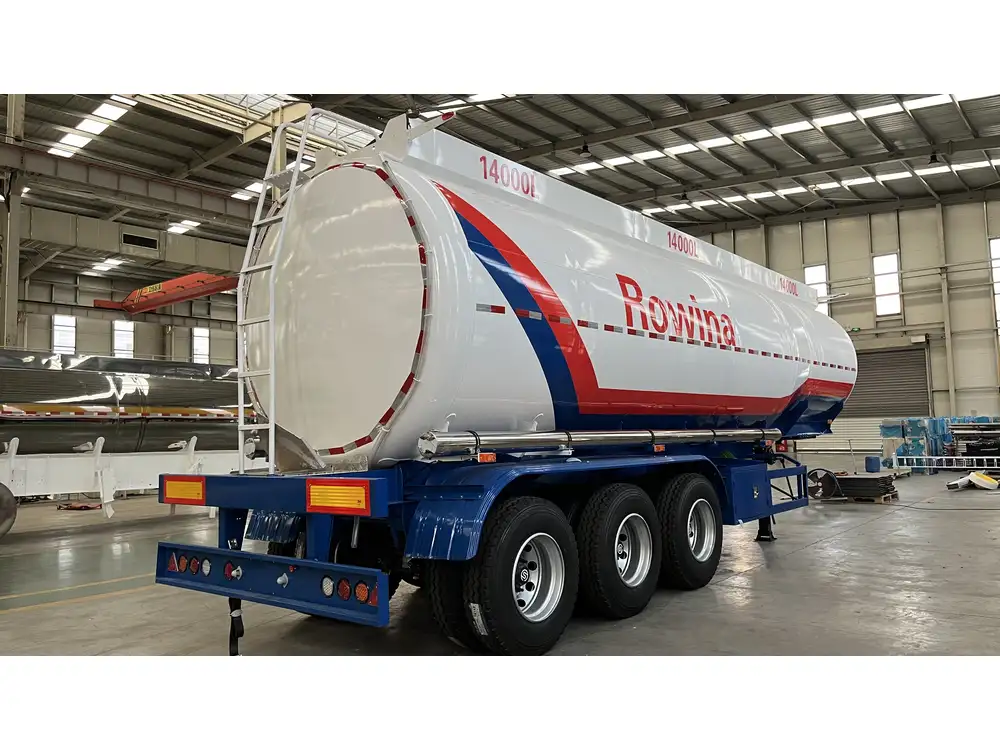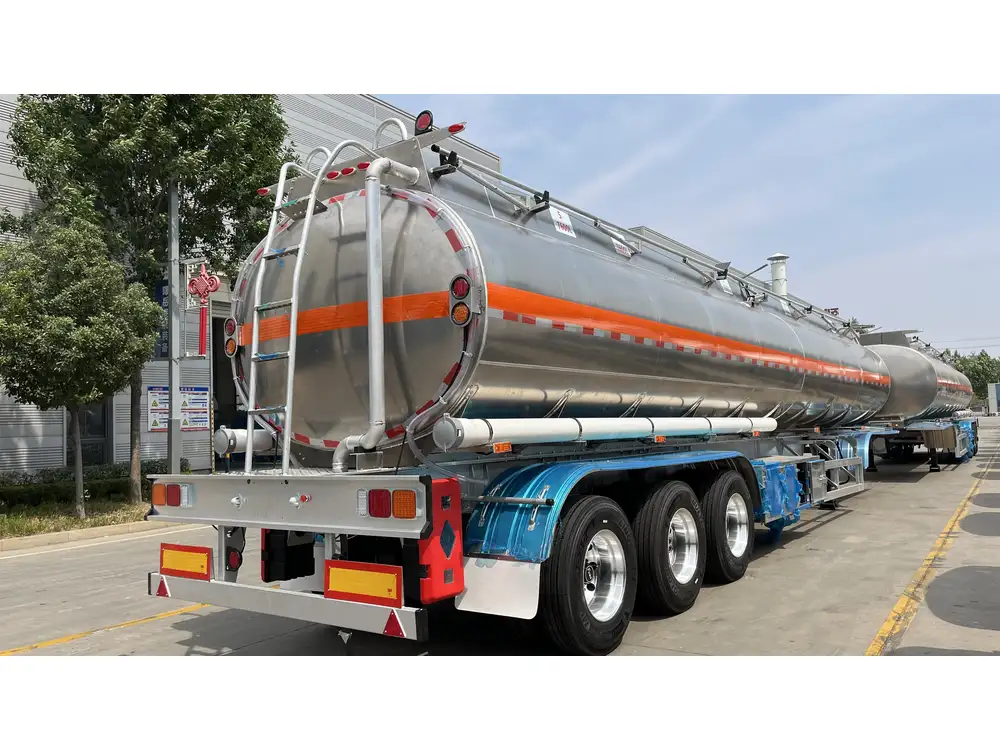Creating a durable, reliable hinge for your dump trailer is essential for ensuring the smooth operation and longevity of the trailer itself. In this guide, we will explore the intricate details involved in constructing a dump trailer hinge, providing insights into materials, design considerations, tools needed, and the step-by-step process to achieve an efficient and effective result. Our intention is not only to equip you with the technical know-how but also to help you navigate potential pitfalls along the way.
Understanding the Importance of a Quality Hinge
A dump trailer hinge serves as the pivotal point of movement for the trailer’s bed. This means that a poorly designed or constructed hinge can lead to issues such as misalignment, uneven distribution of weight, or even catastrophic failure. Key factors to consider include:
- Material Strength: The hinge must withstand significant forces during operation.
- Mobility: A functional hinge design allows for smooth dumping and repositioning.
- Maintenance: Easy access for lubrication and inspection is crucial for longevity.
Essential Tools and Materials

Tools Required
Before jumping into the construction process, gather the following tools:
| Tool | Purpose |
|---|---|
| Welding Machine | For attaching metal components |
| Grinder | To smooth edges and surfaces |
| Drill | For making holes in metal |
| Measurement Tape | To ensure accurate dimensions |
| Marker | For marking cut lines |
| Safety Gear | Including gloves and goggles |
Materials Needed
Choosing the right materials can profoundly affect the durability and functionality of your trailer hinge. Here’s a list of recommendable materials:
| Material | Description |
|---|---|
| Steel Plates | Provides strength and durability |
| Hinge Pins | Allows for rotation and movement |
| Bushings | Reduces friction and wear |
| Bolts and Nuts | For securing different components |
| Paint or Coating | Protective layer against rust |
Key Design Considerations
When designing a dump trailer hinge, consider the following aspects:

Types of Hinges
- Pin Hinge: This is the most common type, allowing for a simple rotational motion. Suitable for standard dump trailers.
- Piano Hinge: Offers a continuous attachment along the length, providing enhanced strength and stability. This type is used for larger trailers.
- Custom Hinge: Tailored to specific needs, ideal for specialized applications, but requires more design work.
Load Capacity
Calculate the maximum load the hinge will support. This involves understanding:
- The weight of the trailer bed.
- The maximum load you plan to carry.
A general rule is to design hinges that can support at least 1.5 to 2 times the maximum expected load.
Clearance and Movement
Ensure that the hinge design provides ample clearance to prevent binding or excessive friction when the trailer is dumped. Pay attention to:
- Hinge Placement: Position hinges near the rear or along the side, depending on trailer design.
- Angle of Operation: Optimize the angle to which the trailer bed can rise for efficient unloading.

Step-by-Step Guide to Making a Dump Trailer Hinge
Step 1: Measure and Mark
Using your measurement tape, determine the appropriate length and width for your hinge plates. Mark these measurements clearly on the steel plates to ensure accuracy.
Step 2: Cut the Steel Plates
Utilize a metal cutting saw or grinder to cut the steel plates according to your markings. Ensure to wear protective gear to shield yourself from metal shavings and sparks.

Step 3: Prepare the Hinge Pins
Drill holes through the hinge plates where the hinge pins will be inserted. Ensure that the holes are aligned perfectly to allow smooth rotation of the hinge.
Step 4: Weld the Components
- Attach the Plates: Position the two hinge plates parallel to each other and weld them at the edges to form the main structure.
- Insert Hinge Pins: Feed the hinge pins through the drilled holes and secure them with nuts to prevent them from coming loose during operation.
Step 5: Install Bushings
Insert bushings into the hinge assembly, helping to minimize friction and wear on the hinge pins. This part is crucial to enhance the durability of your hinge.

Step 6: Test the Hinge
Before attaching the hinge to your trailer, perform a functionality test. Ensure that the hinge moves freely and can sustain the weight without any undue stress. Check for any misalignments or potential weak points.
Step 7: Finish and Protect
Once the hinge passes the test, apply a protective coating or paint to shield it from corrosion and rust. Allow sufficient drying time before proceeding to installation.
Step 8: Install the Hinge on the Trailer
Align the hinge with the designated spots on the trailer and secure it using bolts and nuts. Ensure that it is tightly fastened and test its movement once more to confirm a smooth operation.

Troubleshooting Common Issues
Even with careful planning and execution, issues can arise during the construction and installation of dump trailer hinges. Here are some common problems and their solutions:
| Problem | Solution |
|---|---|
| Misaligned Hinge | Loosen bolts, realign, and retighten. |
| Hinge Still Binding | Check for obstructions; lubricate if necessary. |
| Excessive Wear on Pins | Consider using bushings made from a more durable material. |
| Rust Formation | Inspect protective coatings regularly; apply new paint as needed. |
Maintenance Tips for Longer Lifespan
To maximize the longevity of your dump trailer hinge, consider the following maintenance tips:
- Regular Inspections: Check for signs of wear, rust, or misalignment at least once a month.
- Lubrication: Apply grease to the hinge pins and bushings regularly to prevent friction.
- Cleanliness: Keep the hinge area free of debris and dirt to avoid blockage and ensure smooth movement.
- Re-assess Load Capacity: If you frequently increase the load on your trailer, reassess the hinge’s capability to ensure it remains suitable.
Conclusion
Creating a dependable dump trailer hinge may seem daunting, but with careful planning, the right tools, and a solid understanding of the process, you can achieve a functional and durable solution. Significant emphasis on quality materials, design considerations, and ongoing maintenance will contribute to the overall performance of your trailer. By following this comprehensive guide, you position yourself as a knowledgeable manufacturer capable of producing high-quality dump trailer hinges that meet and exceed industry standards.

FAQs
How long does a dump trailer hinge typically last? The lifespan of a dump trailer hinge can vary based on usage, materials, and maintenance. However, with appropriate care, it can last several years.
Can I replace a hinge on an older dump trailer? Yes, older dump trailers can have their hinges replaced. Ensure to match the specifications of the new hinge to the existing setup to maintain functionality.
What materials are best for high-capacity hinges? High-strength steel is often the best choice as it can withstand the high loads and stresses typically associated with dump trailers.
If you need further assistance or have more questions about manufacturing dump trailer hinges, don’t hesitate to reach out for expert guidance. Understanding these intricate details can significantly enhance the functionality and reliability of your trailers, ultimately leading to greater satisfaction both for you and your customers.



